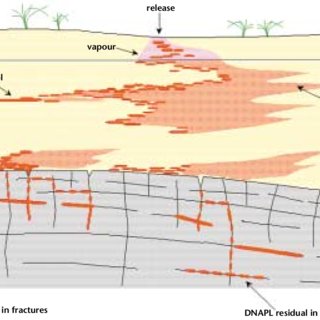
A series of flow-cell experiments were performed to investigate the performance of cosmetic rhamnolipid surfactant flooding on the relationship between source zone mass removal and mass flux reduction for pool-dominated DNAPL TCE source zones in heterogeneous porous media. The results were also compared to those of water-flood control experiments to assess the surfactant enhanced flushing efficacy. The flooding experiments were performed for silica sand and natural calcareous soil representing two different degrees of physical heterogeneity. The result from the flow-cell experiments showed that higher than 97% of TCE mass was removed during rhamnolipid flooding for both porous media scenarios. Although, rhamnolipid flooding experiment results showed successful remediation performance, DNAPL TCE dissolution and rhamnolipid-enhanced dissolution in heterogeneous porous media system exhibited multi-step mass-flux reduction/mass-removal behavior due to the presence of less hydraulically-accessible pool-dominated TCE source zone. However, mass removal and mass-flux reduction relationships for rhamnolipid flushing cases exhibited more ideal removal behavior, indicating the more efficient remediation performance compared to water flooding alone. For all cases, the later stage of mass removal was controlled by the more poorly-accessible mass associated with pool-dominated source zones. The results of this study revealed the impact of non-uniformity of the flow-field and effect of enhanced-solubilization agent on mass removal and mass-flux reduction behavior for DNAPL source zones in saturated porous media
Total file downloads: 2